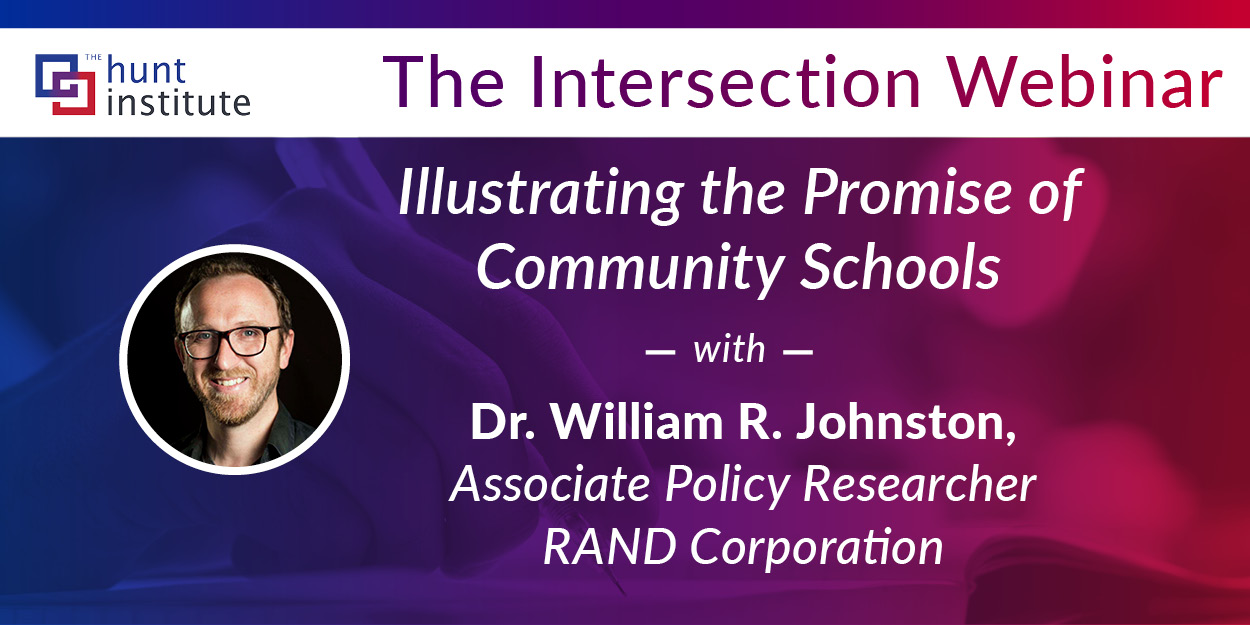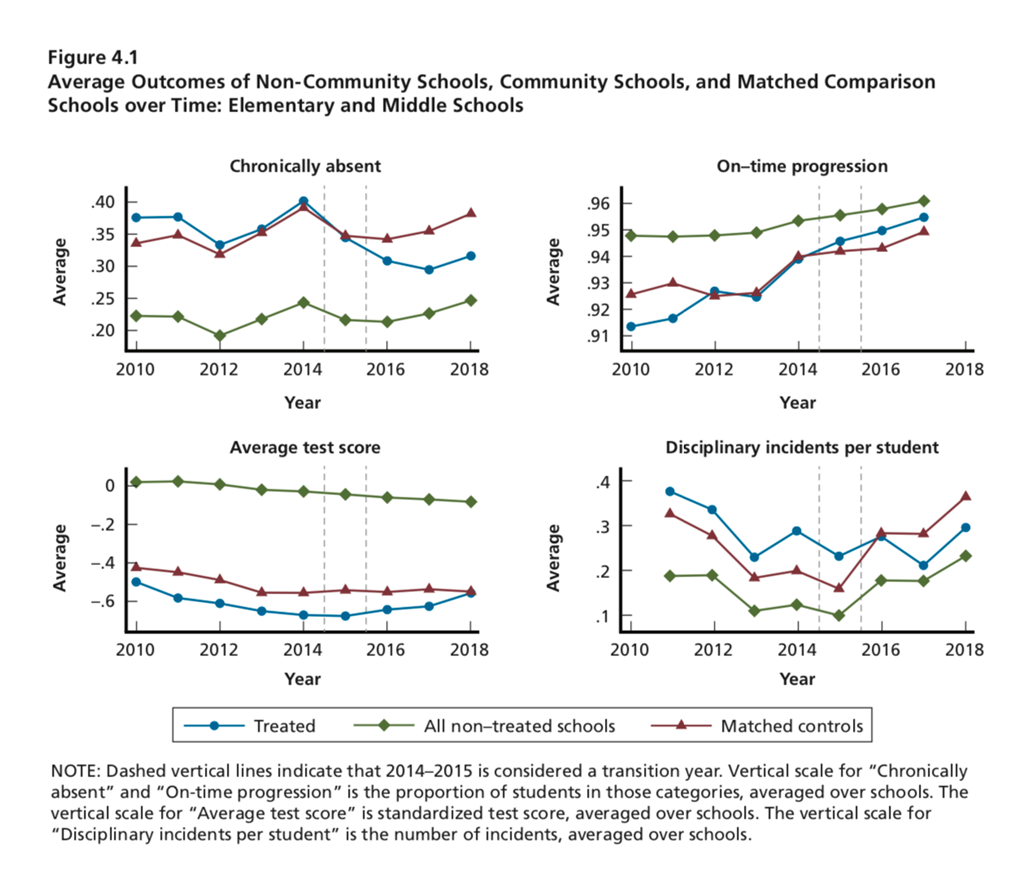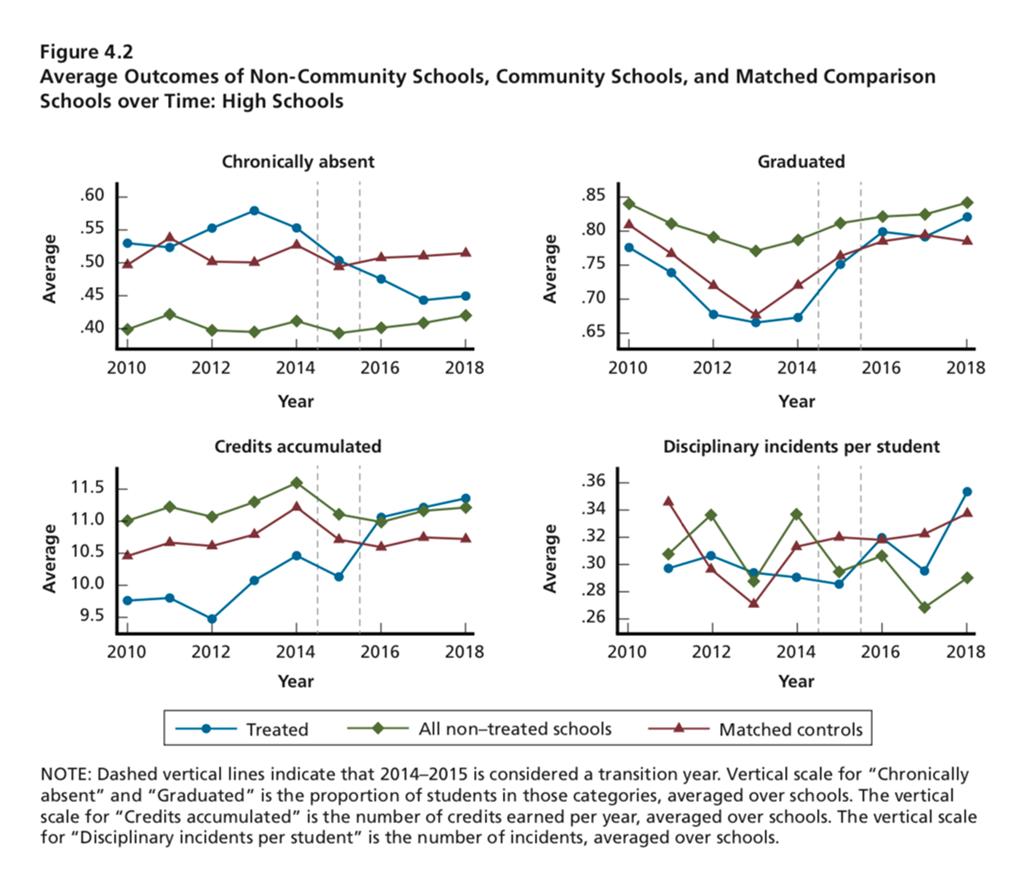
Community schools have emerged as a promising method of meeting the diverse needs of students, with nearly 5000 schools nationwide adopting this model to transform high-need schools. By providing wrap-around services and making a school a true hub of community supports, policymakers are seeking to improve student outcomes by reducing barriers to accessing these important services. New York City Public schools became one of the first districts to attempt to scale the model by creating it’s NYC Community Schools Initiative. Beginning in the 2014-15 school year, over 250 schools received additional funding to extend hours, offer heath care and mental health services, and other crucial public services to students and their families.
This week, we were joined at the Intersection by Dr. William Johnston, an Associate Policy Researcher with the RAND Corporation, to share the findings of his recent report, Illustrating the Promise of Community Schools: An Assessment of the Impact of the New York City Community Schools Initiative. This multi-year study examined the New York City Community Schools Initiative to determine how community schools impact student learning and provides recommendations for state- and district-level policymakers interested in adopting the Community Schools model.
The study sought to measure the impact of the NYC Community Schools Initiative on outcomes related to attendance, educational attainment, academic achievement, student behavior, and school climate and culture. Researches then examined the impacts of the intervention on key student subgroups, and to what extent differences in program impact related to school-level characteristics.
Key Takeaways
- The Community Schools Initiative targeted schools that were facing significant challenges in both student achievement and school climate. All schools in the program were either identified as Renewal Schools (as part of a city-wide school turn around initiative) or were receiving state Attendance Improvement and Dropout Prevention (AIDP) grants, or both.
- Overall, the elementary and middle schools in the Community Schools Initiative saw improvements in attendance, on-time progression, math scores, disciplinary incidents, and teacher and student connectedness.

- At the high school level, participating schools saw an improvement in attendance, graduation rate, and credit accumulation.

- Researchers found that the impacts of the community schools initiative had statistically significant impacts across student subgroups.
- In elementary schools, chronic absenteeism and number of disciplinary incidents decreased across almost all subgroups, and nearly all groups saw a statistically significant increase in average math test scores.
- For high school students, the proportion of chronically absent students also decreased across all subgroups. Additionally, every subgroup experienced a statistically significant increase in the number of credits accumulated, and graduation rates for nearly all subgroups saw a statistically significant increase.
- When controlling for school-based variables, the study found three situations in which program impact varied.
- The initiative was more effective in raising math scores and reducing disciplinary incidents in un-zoned schools compared to those that were highly or lowly zoned.
- NYC-CS was more effective in improving levels of credit accumulation at high schools with newer principals.
- Renewal Schools were more successful at reducing chronic absenteeism, increasing on-time grade progression (among elementary and middle schools) and increasing credit accumulation (among high schools) than non-Renewal NYC-CS schools.
- Differences in implementation of the Community Schools Initiative only resulted in differing program impacts under two conditions:
- Schools with collaboration levels above the median had stronger impact on student connectedness to adults.
- Schools with stronger mental health implementation were more effective at reducing chronic absenteeism.
- While there are tangible impacts on a number of student outcomes, implementing the Community Schools Initiative demands resources that are not available in all contexts. As such, strategic partnerships at both the district- and school-level are instrumental in ensuring the program is sustainable.
- Johnston also referenced his recent op-ed discussing how the Los Angeles United School District can learn from the New York Community Schools Initiative.
For our full conversation with Dr. Johnston, please watch the webinar below.
Join us on Wednesday, March 11, 2020 at 1 p.m. ET when we welcome Lisette Partelow, Senior Director for K-12 Strategic Initiatives at the Center for American Progress, to discuss her recent report What to Make of Declining Enrollment in Teacher Preparation Programs. This report examines the nationwide decrease in enrollment in teacher preparation programs and provides policy recommendations for state and federal governments to increase data collection and develop targeted solutions to improve teacher preparation.
See you at The Intersection!

The Hunt Team





